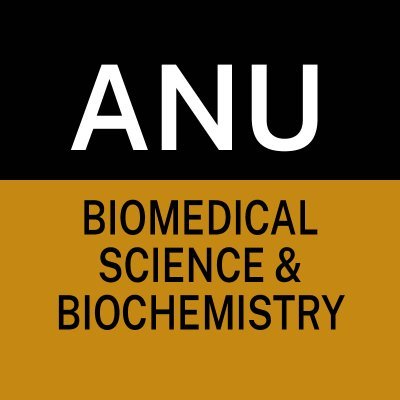
ANU Toxo Lab
@ANUToxoLab
Followers
339
Following
111
Media
42
Statuses
151
Giel van Dooren and his team of Toxo Avengers. Doing Toxo Research since 2012!
Canberra, Australia
Joined February 2020
Come join our fabulous department to undertake a PhD!
Want to undertake a cutting-edge PhD in molecular sciences? Are you a high-achieving student (Australian or New Zealand citizen or PR)? Contact one of our award-winning research Group Leaders to express your interest: https://t.co/bTAzdGk4Ps / Info: https://t.co/CGNPwqRP3c
0
2
5
A super enjoyable project led by the amazing Jenni Hayward and Rachel Leonard. Jenni’s first senior author publication and Rachel’s first first author one (not bad for an undergrad project!). Very grateful also for Feng and Yuan’s contributions! 9/9
0
0
2
What might the role of the Fe-S clusters on Complex IV be? We don’t know for certain. The lability of ApiCox13 when lacking its Fe-S clusters could mean that ApiCox13 regulates Complex IV and ETC function in response to iron availability or levels of reactive oxygen species. 8/9
1
0
1
But are the Fe-S clusters on ApiCox13 important? Parasites expressing a version of ApiCox13 that is unable to bind to Fe-S clusters are unable to grow and unable to assemble an active Complex IV. The Fe-S clusters on ApiCox13 are therefore essential for its function! 7/9
1
0
1
Using a parasite strain in which we can deplete the ApiCox13 protein, we show that getting rid of ApiCox13 impairs parasite growth and Complex IV function. So ApiCox13 is essential for Complex IV activity! 6/9
1
0
1
In our study, our collaborators Yuan Tian and Feng Tan from Wenzhou Medical University first show that ApiCox13 does indeed contain two Fe-S clusters. We also validate that it’s a true Complex IV protein. 5/9
1
0
0
The identification of ApiCox13 in Complex IV was surprising, since human MiNT isn’t a Complex IV protein and Complex IV from other organisms isn’t known to contain any Fe-S clusters. So what was this Fe-S protein doing in Toxoplasma Complex IV? 4/9
1
0
0
In an earlier proteomic analysis of Complex IV from the Toxoplasma ETC, we identified a protein called ApiCox13, which has homology to a human Fe-S protein called MiNT. 3/9 https://t.co/arjn5usSe3
elifesciences.org
The proteins found in the mitochondria of apicomplexan parasites, including key proteins involved in energy generation, are very different from mitochondrial proteins of the animals these parasites...
1
0
0
Fe-S clusters are covalently bound prosthetic groups on proteins that have been around since life first evolved. They have a range of key roles in cells, including in the electron transport chains (ETC) that occur in eukaryotic mitochondria. 2/9
1
0
1
A new paper from our group investigating the essential role of an iron-sulfur (Fe-S) protein in the cytochrome c oxidase complex (Complex IV) of the Toxoplasma mitochondrial electron transport chain! 1/9 https://t.co/4Cy53MadYN
journals.plos.org
Author summary Complex IV is a canonical component of the electron transport chain (ETC) of eukaryotic mitochondria. Recent evidence indicates that considerable diversity exists in the protein...
1
8
38
Check out this Research Officer position in our department with Alex Maier's group!
Exciting opportunity for a Research Officer to join the team at BSB! Contribute to the development of a novel drug delivery system to target parasitic infections and related diseases affecting millions globally. https://t.co/HZcHMopDkD
#parasiticinfections #drugdelivery
0
0
2
Great work by Deyun, Victor and James, and many collaborators including @CorryLab , @fidocklab , @PhotiniSinnis17 and Marcus Lee. Glad we could contribute on the Toxo side of things! 8/8
0
0
2
As cipargamin and other PfATP4 inhibitors make it to the field, it will be important to monitor for the G358S mutation as a marker for emerging resistance. 7/8
1
0
2
A recent clinical trial of cipargamin identified the same G358S mutation in parasites associated with treatment failure. The Lehane group data now explain the molecular basis for these failures. 6/8 https://t.co/qCCSS0wH24
academic.oup.com
Cipargamin, at single doses of 50–150 mg, was associated with rapid parasite clearance (parasite clearance time ~8 hours) and PCR-corrected adequate clinic
1
0
1
The G358S mutation also confers high level resistance to a different PfATP4 inhibitor called (+)-SJ733. Mutation of the equivalent residue in the ATP4 protein of the related parasite Toxoplasma also confers resistance to cipargamin and (+)-SJ733. 5/8
1
0
0
The Lehane group show that a single amino acid substitution in PfATP4 (a glycine to serine change at amino acid residue 358; G358S) confers >1000-fold resistance to cipargamin in assays that measure parasite proliferation and PfATP4 activity. 4/8
1
0
0
Previous studies have shown that treatment with cipargamin (a spiroindolone) and other PfATP4 inhibitors cause an increase in intracellular Na+ levels in the parasite, leading to parasite death. 3/8
1
0
0
With the emergence of resistance to front-line anti-malarials such as artemisinin, new drugs to treat malaria are much needed. The Plasmodium Na+ pump PfATP4 regulates Na+ concentrations in the parasite, and is the target of promising new antimalarials such as cipargamin. 2/8
1
0
0
A really cool new manuscript from Adele Lehane’s lab @ANU_RSB_BSB , demonstrating that a single amino acid change in the sodium pump of Plasmodium parasites confers >1000-fold resistance to a leading new anti-malarial drug called cipargamin. 1/8 https://t.co/RUSpniDPpx
nature.com
Nature Communications - In a recent clinical trial for oral administration of cipargamin in individuals with malaria, there was an emergence of recrudescent parasites with a G358S mutation in...
1
7
34
Parasitology through art - cool stuff from the creative students on Alex Maier's 3rd year undergrad course!
0
0
9



